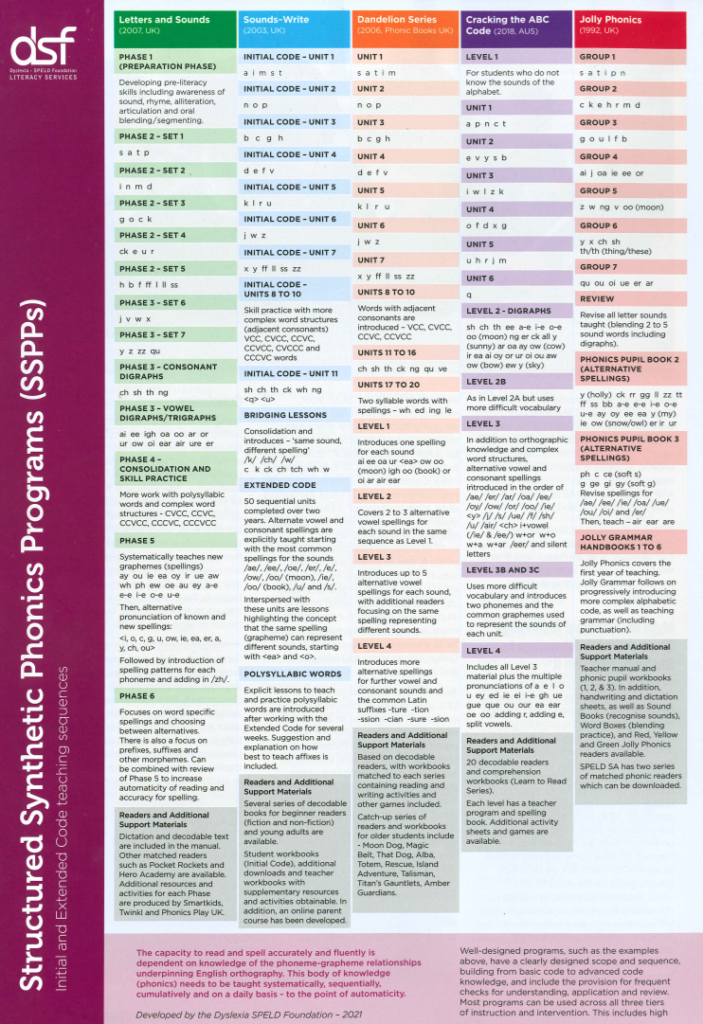PLD is delighted that our evidence-based literacy programs are ranked among other high-quality and well-designed programs for teaching Structured Synthetic Phonics programs (SSP programs) in primary schools.
In the January edition of The Bulletin, the Dyslexia-SPELD Foundation compared PLD with other evidence-based SSP programs which facilitate high-quality Tier 1, Tier 2, and Tier 3 instruction.
Professor William Louden describes synthetic phonics as a systematic approach to teach reading by beginning with sounds (phonemes) and blending (synthesising) these sounds to make words by.
“The capacity to read and spell accurately and fluently is dependent on knowledge of the phoneme-grapheme relationships underpinning English orthography. The body of knowledge (phonics) needs to be taught systematically, sequentially, cumulatively and on a daily basis – to the point of automaticity” states the Dyslexia SPELD Foundation in their publication in 2021.
PLD’s SSP program can be used across the three tiers of instruction and intervention. Tier 1 represents all students, Tier 2 represents small group interventions for students who are at risk of falling behind, while Tier 3 represents intense targeted interventions for students who are operating significantly behind their age-matched peers.


PLD’s program can be used across the three tiers of instruction and intervention. Tier 1 represents all students, Tier 2 represents small group interventions for students who are at risk of falling behind, while Tier 3 represents intense targeted interventions for students who are operating significantly behind their age-matched peers.

The article highlights that consistent use of the same Structured Synthetic Phonics program, particularly from the early years, reduces the likelihood of cognitive overload by ensuring the same instructional language, activities, resources and content is used throughout the school and will produce the best results for students.
A PDF of The Bulletin article can be downloaded here.
PLD’s Structured Synthetic Phonics Teaching Overview
PLD’s Structured Synthetic Phonics (SSP) program is an Australian evidence-based whole-school offering that is aligned with the Science of Reading. The PLD teaching sequence commences with initial (simple) code and gradually introduces extended code. All of the PLD programs are supported by downloadable teaching sequences and companion screening and tracking manuals for each primary school year level; Early Years, Foundation, Year 1 & 2 and Year 3, 4, 5 & 6.
The overview below details PLD’s SSP sequence from single letter phoneme-grapheme relationships and digraphs through to the introduction of alternative spellings in the extended code. Along with teaching the phoneme-grapheme relationships in isolation, it is critical that opportunities to apply this knowledge to extended reading and writing (dictation) tasks are also provided. The PLD SSP phonic teaching sequence also underpins the presentation of High-Frequency Words (HFW’s).
Read more here.



 print
print